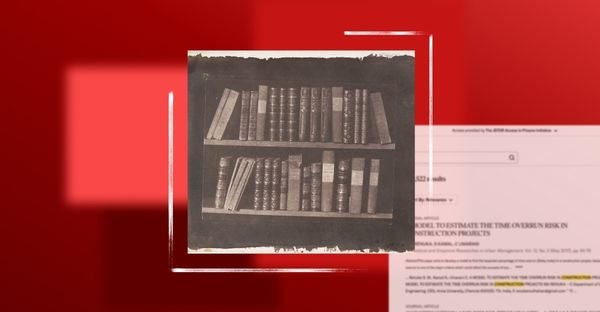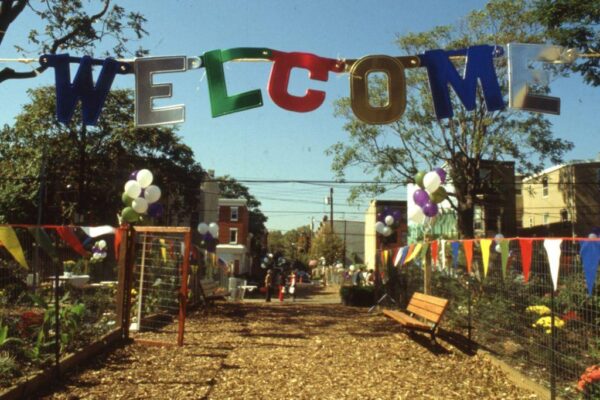
A Scene in a Library [Salted paper print from paper negative]. The Metropolitan Museum of Art.
This article is a part of the Inside & Connected series, which shares ideas, interviews, and projects that affect prison-based education, students and educators.
Welcome to our new series: Inside & Connected
At JSTOR Access in Prison, we recognize that education is not just about access to information—it’s about building connections and fostering community no matter where that community may be. Since 2007, we have supported higher education in prison and jails by offering access to JSTOR’s extensive library of academic content and developing materials to help students learn digital skills and research methods. At the beginning of 2025, we launched The Catalyst, a JSTOR Access in Prison newsletter that showcases people and projects working on prison education initiatives. We are now launching a new blog series, Inside & Connected, to build even more community connections in these liminal spaces.
As the Correctional Education Manager at JSTOR Access in Prison, I’ve witnessed how our mission extends beyond simply providing educational materials. The real impact lies in the relationships formed through the use of these materials—from security staff to IT officials, from educators to students, from those inside the prison space to those we call “free,” entire communities now thrive together. We plan to use this blog series to share the impact of access to education on the wider community. Our goal is to highlight and nurture these vital community bonds that develop when barriers to knowledge come down.
What you can expect from this series
This blog series will showcase the connections and community built along the way during our last two decades of work. We will pull inspiration from 1450+ sites and the nearly 1.1 million people who use JSTOR while incarcerated. In this series, we will:
- Examine the role of digital literacy in prison education: These skills create bridges between learners, enabling peer-to-peer support networks to form and strengthen community bonds.
- Hear directly from currently and formerly incarcerated individuals: Discover what it means to access education inside prison, in their own words.
- Learn from staff and faculty supporting their educational journeys: Shared experiences reveal how educational partnerships foster meaningful connections that extend beyond the classroom.
- Recount stories from the founding members of the JSTOR Access in Prison Initiative: These pioneers built the foundation for a network that continues to connect educators, learners, and administrators.
- Highlight successful partnerships with correctional facilities and educational institutions: These collaborations create lasting relationships between institutions and demonstrate the power of unified purpose in education.
- Address challenges and solutions in expanding educational access: By working together to overcome obstacles, diverse stakeholders forge stronger bonds and more resilient educational communities.
I would argue that JSTOR Access in Prison transforms more than just education—it changes how people communicate and connect. As one Massachusetts student told us about using JSTOR inside:
I use JSTOR for everything now. Legal work, class work, arguing issues with my cellie.
This seamless integration of academic resources into both coursework and daily discussions shows how digital access to verifiable sources fosters continuous learning beyond the classroom. Another student who is incarcerated in North Carolina, Tim Johnson, shared in his blog post The Impact JSTOR in Prison Has Made on Me, how access to JSTOR expanded his agency with a connection to ideas, information, and purpose by quoting author Richard Paul Evans:
We all have a road to walk. The foolish walk blindly. The intelligent navigate it. The good repair it as they go.
This transformation in dialogue and understanding emerges when individuals gain access to resources that expand their worldview. Often it is through the act of reading that we find the words that describe our own being, give context to our past, and inspire our hopes for the future. This experience of what we read becoming what we live is not confined inside a prison, and we hope you’ll come along.
Join us on this journey
Join us as we share stories, insights, and updates on our progress. If you are part of a prison education program interested in being part of a future blog post or how to access JSTOR for your students, please reach out! Together, we can empower justice-impacted individuals and build meaningful community connections that enhance lives through increased access to the tools and the people required for a comprehensive high-quality education.
To learn more about developments in prison education, resources, and access to JSTOR in jails and prison, subscribe to our newsletter The Catalyst.
________________________________________________________________
JSTOR Access in Prison initiative provides a premier research database of peer-reviewed scholarly material for students in jails and prisons. Learn more at https://about.jstor.org/jstor-access-in-prison/
This series is part of our parent company ITHAKA’s mission to democratize access to knowledge and ensure that people who are incarcerated are included.



